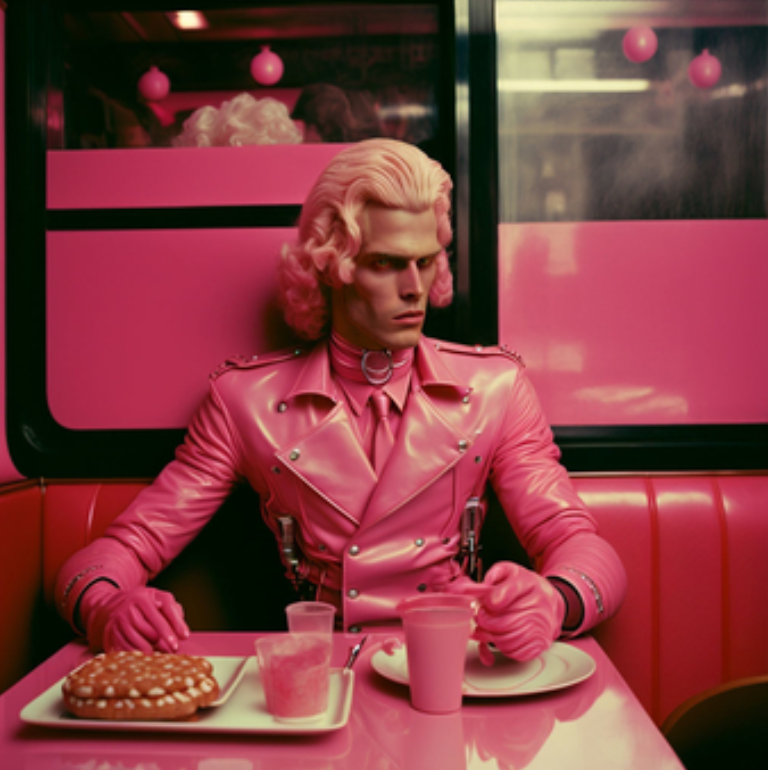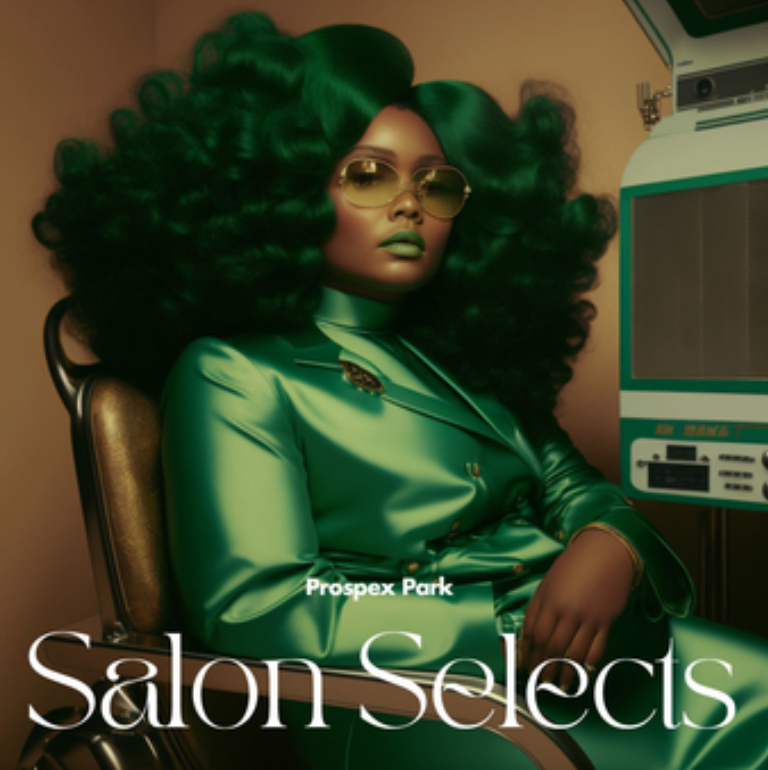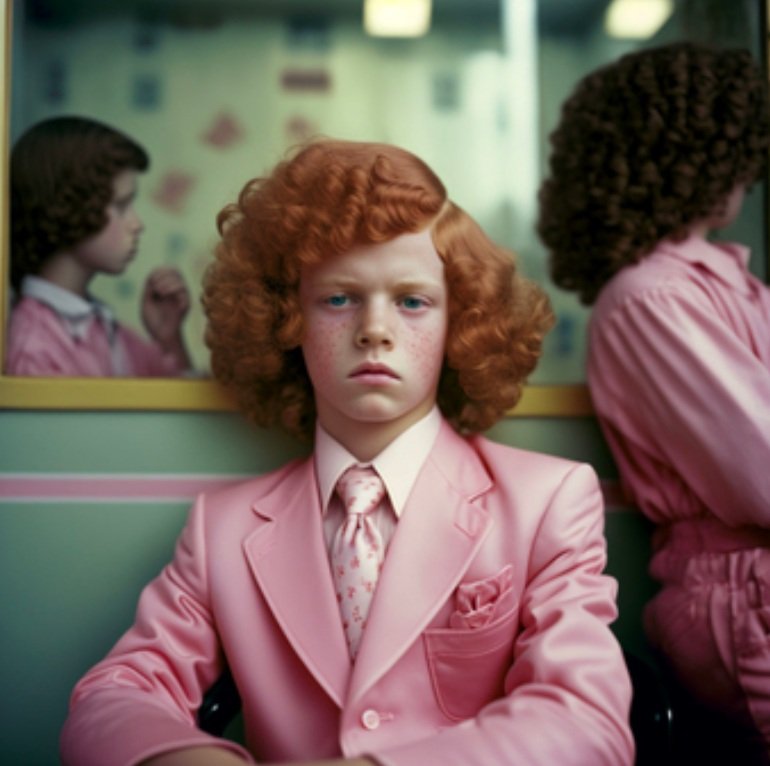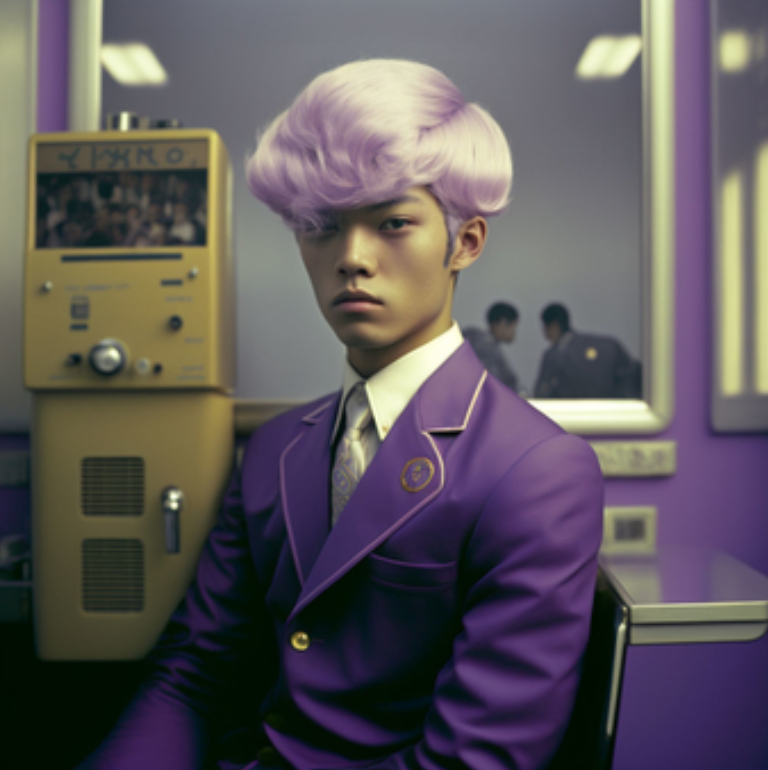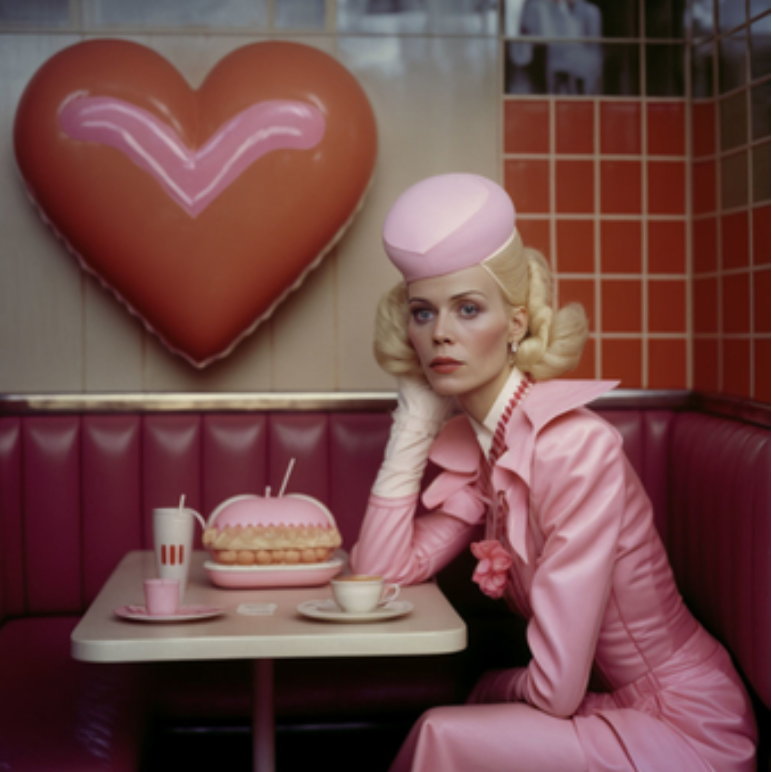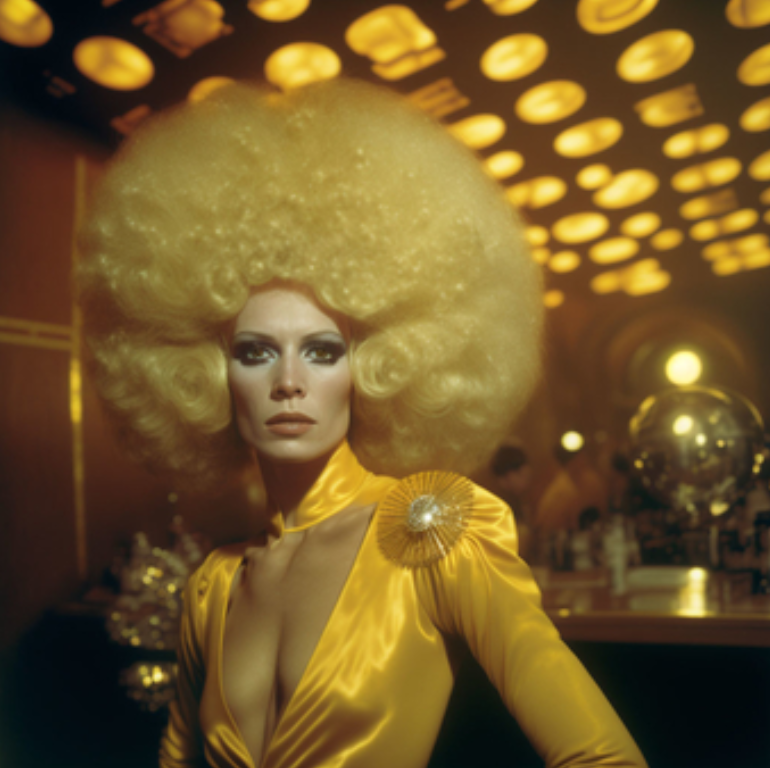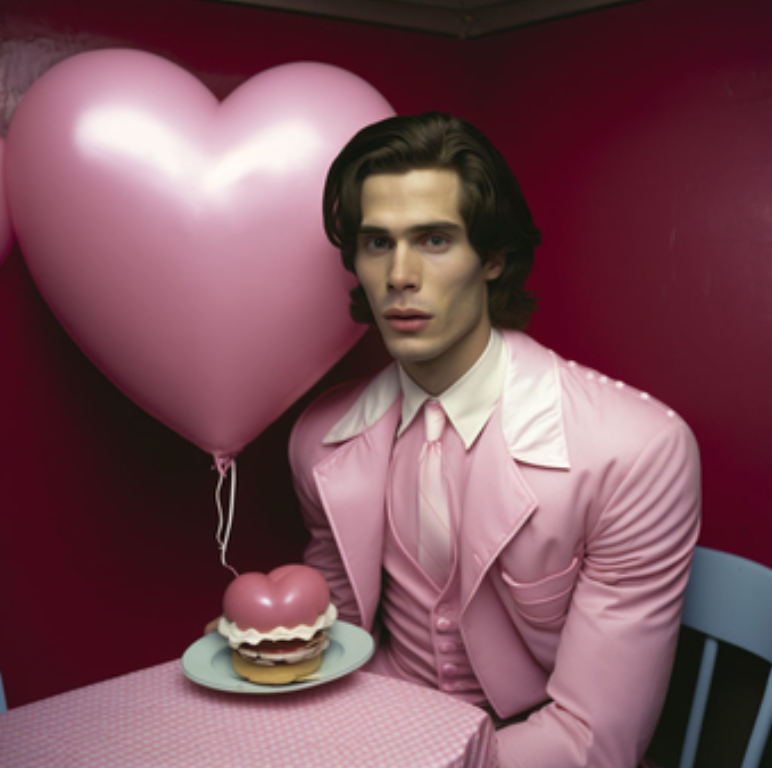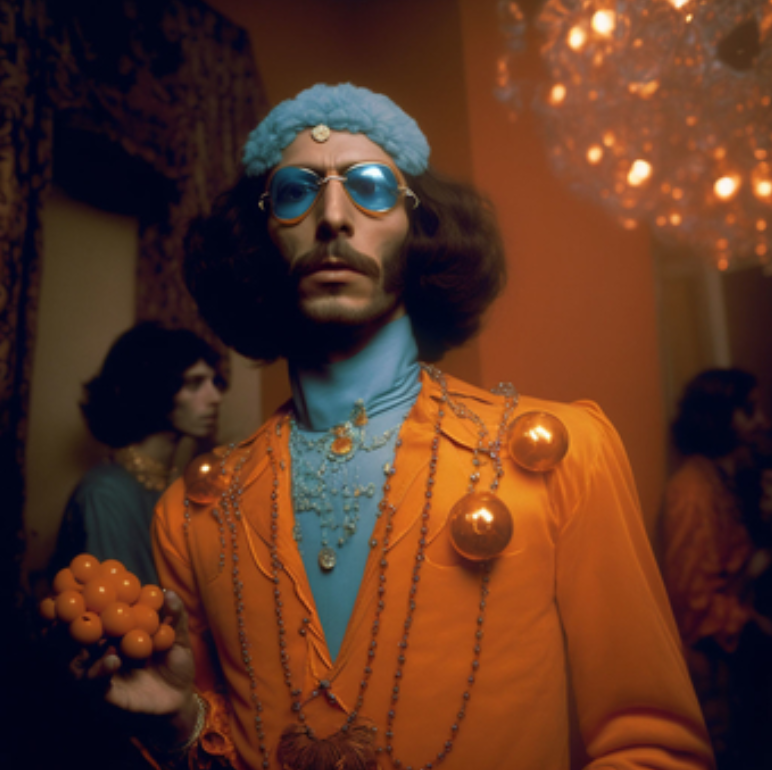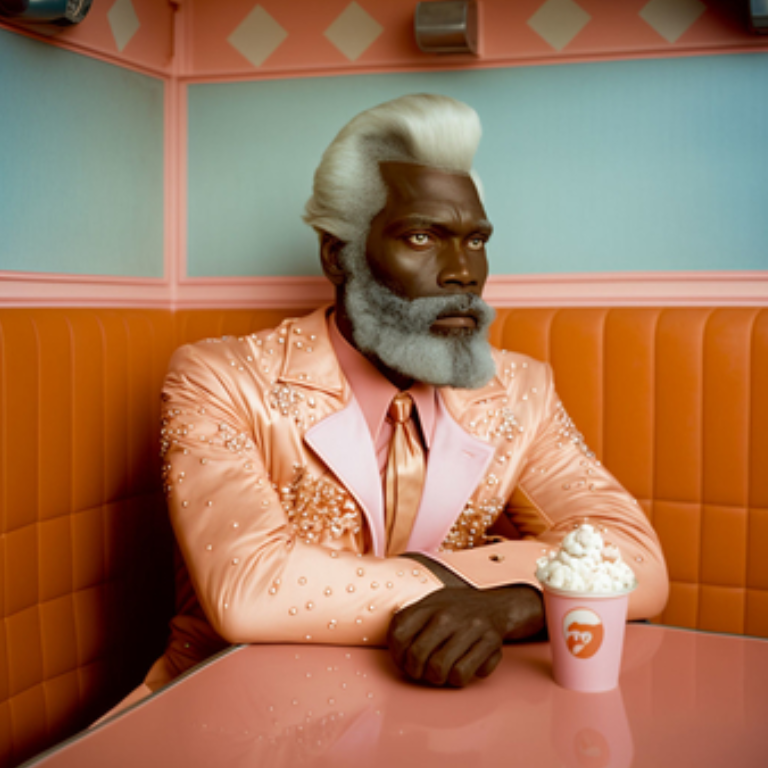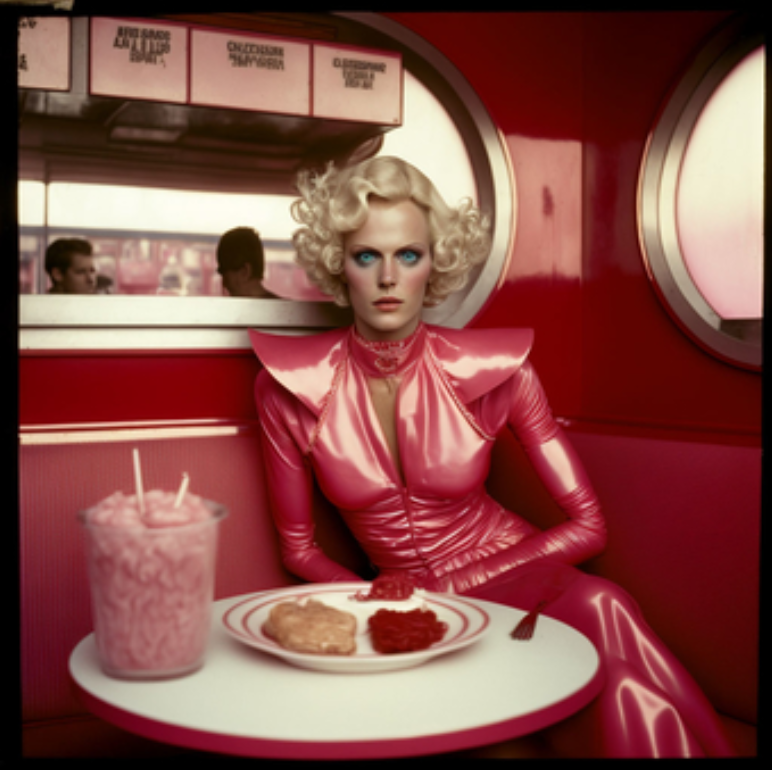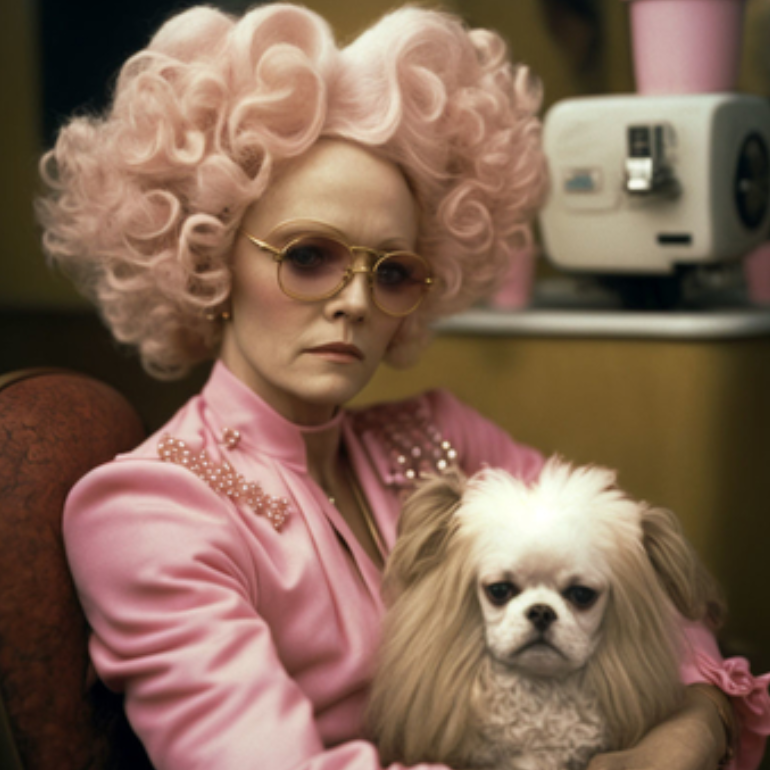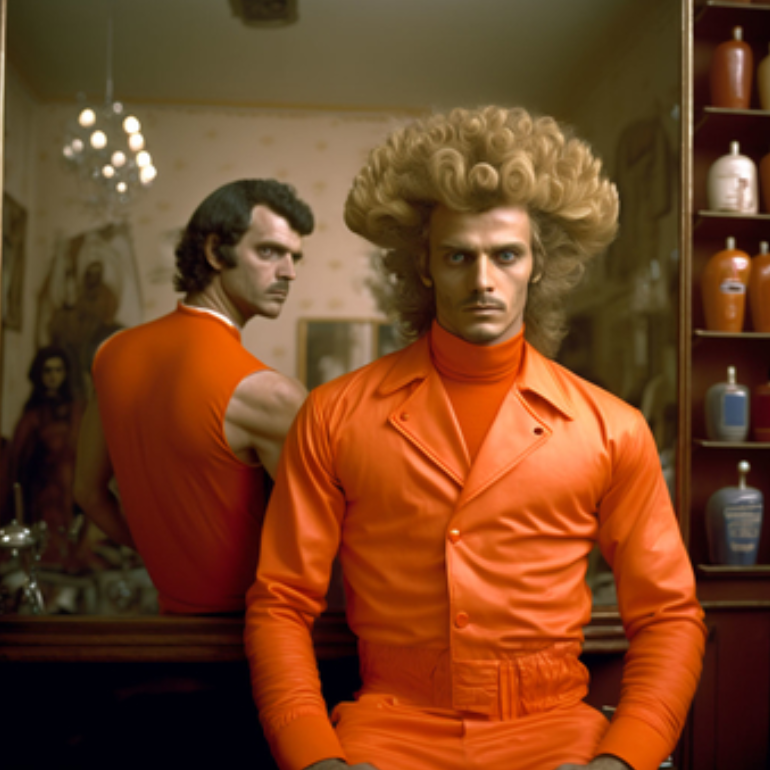AdAge: AI Lessons from a Creative Director’s striking Midjourney portraits
Rupert Cresswell isn’t scared of robots—well, maybe a bit
"For a long time after moving to Los Angeles, Rupert Cresswell—artist, creative director and British expat—felt like an outsider looking in. This might be why AI was the perfect companion as he embarked on a series of lush, off-kilter portraits of the city’s inhabitants.
“It is quite an alien place for me. I’m still exploring it. As people might tell you who’ve moved to L.A., it takes a while to get to know it,” Cresswell told Ad Age recently.
Over the holidays, Cresswell found a way to commune with the unfamiliar. He happened to visit two landmark L.A. eateries, Musso & Frank and Canter’s Deli, on the same day. And he found himself struck by the atmosphere in both—what he described as “a time capsule of culture and fashion.”
He did a lot of people-watching and felt the past clashing with the present. By the time he got home, he knew he wanted to capture what he’d experienced—these people who felt like they existed long ago, yet here they were in the present day, a feeling L.A. can provoke perhaps more than other cities.
At the same time, generative AI software was gaining traction in art and advertising. So, Cresswell jumped in and began experimenting—developing prompts for the image generator tool Midjourney to see if it could create portraits that reproduced the vibe he’d felt so strongly in the restaurants.
Related: A generative AI guide for brands
The result is a series called Prospex Park. Cresswell situated the first set of portraits inside a Canter’s-like deli. The patrons—entirely AI-generated, with some touchups in Photoshop—are colorfully surreal and eerily lifelike.
“You write a few prompts. You describe the scene,” said Cresswell. “I try to put in the era. This project has a retro-future thing going on, so I throw in some ’70s stuff—colors, film stocks, things I sort of nerdily know. So I came up with a little recipe of prompts that will generate hundreds of images. Then it’s about finding something that knocks you off your feet a bit.”
Pleased with the diner series, Cresswell expanded the series beyond restaurants—indeed, beyond the city itself. He began to envision a whole community of people and places, turning Prospex Park into “a retro suburb from an alternate future.”
The second series was set in a salon.
'A good mirror for the creative process'
As Cresswell has immersed himself the project—fine-tuning the prompts, sifting through the results, editing down to the best selects—he’s slowly been learning Midjourney’s preferences, biases and quirks. And in a way, he’s felt a kinship with the AI. Much as Cresswell is trying to understand his new world, AI is too—a newcomer navigating the flood of imagery it’s been fed.
“I’m looking at the styling of people, the way they’re acting, the interiors of these places, and trying to distill it into a piece of art,” said Cresswell. “And that’s basically what AI does—churn over a ton of imagery and learn from it and try to pull things together. It’s almost asking, ‘Is this realistic? Is this what the world is like?’ I guess that’s why it’s a good fit. It’s a good mirror for the creative process.”
Cresswell also did a few portraits based around holidays, such as New Year’s Eve and Valentine’s Day.
He thinks the portraits have been resonating because they feel otherworldly yet anchored in reality, not totally off in the land of the weird. “I don’t go too far with it,” he said. “It’s 10 percent away from reality. It’s like something you might see in an editorial fashion spread. It’s not sci-fi weirdness with tentacles coming out of people’s brains.”
As smoothly as the project has gone, Cresswell acknowledges the fears around AI, too—how it can steal artists’ work (Cresswell said none of his portraits are derived from other artists’ images) and how it might seem to be replacing human creativity in certain cases.
As an artist and creative director, Cresswell said he sees both sides—AI’s promise and its perils. In his day job at Alkemy X, where he is executive creative director, it’s been an unquestionable help, allowing the team to become more efficient in their process.
“We recently did a spot with an origami tiger made out of a lottery ticket walking through a park in Florida,” he said. “It might take me three days to get a convincing depiction of that scene, but I can throw out a bunch of AI images and get somewhere close right away. Everyone’s concerned about technology affecting people’s work. But in the way we’ve been using it, it’s sped up the process so we get there quicker and we can explore other avenues and ideas.”
Asked if AI might be steering the ship too much during creative ideation—if the images it supplies might begin to supplant what the creatives originally had in their head—Cresswell said in some ways it’s the opposite. AI can help creatives get to the vibe they originally envisioned more quickly and efficiently, he said.
“The more adept you get at prompting it, the closer it can get to what you envisioned,” he said. “Nine times out of 10, you’re pulling from Getty Images anyway, maybe mixed with work from a storyboard artist who has their own point of view, mixed with references from a spot you saw in 1996 that you liked. You’re always going to be working with reference points. AI might actually get you closer to your original vision—and quite immediately.”
At the same time, Cresswell said, even when the AI’s ideas are “wrong,” it can still be useful.
“It has a wacky way of thinking, and happy accidents do happen,” he said. “There are clichés that artists all regurgitate. AI has a slightly different perspective. It might throw out something that’s not right, but you might think, you know what, there’s something in that.”
However, AI is a mirror in a more troubling way, too.
“I try to put a lot of diversity in my things. That’s what this portrait collection is—a melting-pot thing,” Cresswell said. “But because of the vast amount of beautiful thin blonde women in magazines, it pulls up that kind of imagery more often than other things. It’s inherently biased slightly toward our biases in the industry. It’s a mirror of what prompted it in the first place, and what it’s learned from.”
Still, for all these limitations, Cresswell said AI is a democratizing force, one that allows more people to be creative and experiment with art—which is all positive. “It takes away the barrier of financial constraints or technical knowhow that stop a lot of people from making something if they have an idea,” he said. “Even just the barrier of self-esteem—‘I can’t draw, I’m not arty.’ People should be able to sit and imagine and enjoy visuals they create. It’s a fun thing to do.”
He acknowledges this democratization inevitably creates a glut—millions of images that wouldn’t have existed otherwise, many of them blatantly ripped off from other artists, others sitting in a gray area. Managing this aspect of the AI era will certainly be a big challenge, too.
“There is a flood of imagery with no concept or point of view. The tsunami that’s already flooding social media—I can see why people would be immediately put off by it,” Cresswell said. “There’s a lot of ripping off of artists, too. And if people’s prompts are derivative and empty, then what you make will look derivative and empty, too. But it’s more about the pilot, not the software. The better you are at knowing what to do, the closer you’ll get to imagining things that are cool.”
For now, Cresswell is continuing to experiment. He recently created his first Prospex Park portraits of real people (see below)—collaborating with Harvey Guillén (Guillermo from “What We Do in the Shadows”) and Casey Spooner (artist and former frontman of Fischerspooner).
Next up is “The Trip,” a Prospex Park series exploring travel.
Cresswell doesn’t claim to know where AI is heading, in advertising or art. But he said both fields have always thrived on experimentation. And given the choice between embracing it or running for the hills in fear—well, it’s no choice at all.
“I don’t want to be under robot rule, out of a job, living in the Matrix,” he said. “But there’s always a need for relearning and changing. Is this a fad? Does what I’m making have a shelf life of a week? I have no idea. But it’s the beginning of really interesting things. It’s up to us what we do with it. The artist, the creative director, the curator, the art director—whatever intentions they have is what’s going to come out the other end. So blame the humans, not the AI.




